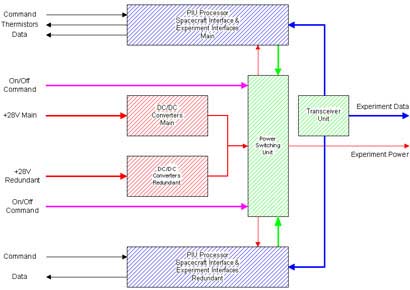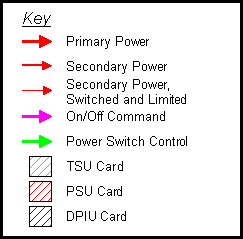|
|
| The
Imperial College Rosetta Project |
|
 |
| |
| The Plasma Interface Unit (PIU) |
The Rosetta Plasma Consortium consists of five sensors and
a common Plasma Interface Unit (PIU), resulting in an investigation
which provides the opportunity to integrate the scientific
capabilities of the sensors and the instrument teams, as well
as greatly simplifying the instrument interfaces to the spacecraft.
This simplification of the interfaces has advantages not only
pre-launch, but also enables the co-ordinated planning of
the post-launch scientific operations of the investigation.
Additionally, this integration helps to maximise the resources
available for the plasma investigations, given the tight overall
buget in terms of mass and power on the spacecraft.
The role of the PIU is to act as an interface between the
five plasma instruments and the spacecraft by providing a
single path for the transmission of scientific data to the
ground and commands sent from the ground. The PIU also provides
a safely managed power supply to the instruments. The PIU
incorporates a number of novel technical solutions to ensure
that the scientific output of the RPC group of instruments
is maximised. These solutions also ensure that the risks of
malfunction during the mission are minimised by a failure
tolerant design. This ensures the required robustness to survive
on a long mission and in the cometary environment.
| PIU Overall Design Concept |
The main functions of the PIU are as follows:
- Acquisition of scientific and housekeeping data
from the five sensor units of the RPC, and integration
of the data into a single data stream for transmission
to the spacecraft telemetry system, according to the
operation modes of the integrated experiment.
- Receiving commands from the spacecraft command system,
decoding the commands and transmitting them to the
individual sensor units.
- Provision of safe and autonomous control functions
to the whole RPC package.
- Provision of power conversion from the spacecraft
primary power system to the secondary voltages required
by the sensor units.
- Provision of the power management system to switch,
on ground command, the different sensor units through
power switches which also provide over-current protection
against failures in the sensor units.
- Provision of onboard data processing services to
the MAG sensor unit which has no processor incorporated
in its own electronics.
|
The PIU has been designed to inplement these tasks using
full redundancy of the instrument-level function. There are
redundant interfaces to the spacecraft and two fully redundant
processor and power converter units. Similarly, there are
redundant transceiver units connecting the PIU to the individual
experiments. The design requirement implemented in the PIU
is that no single point failure should disable the RPC experiment
as a whole, for the safe operation of the investigation during
the long mission of Rosetta.


This page was last updated September 2002.
|
|
|


